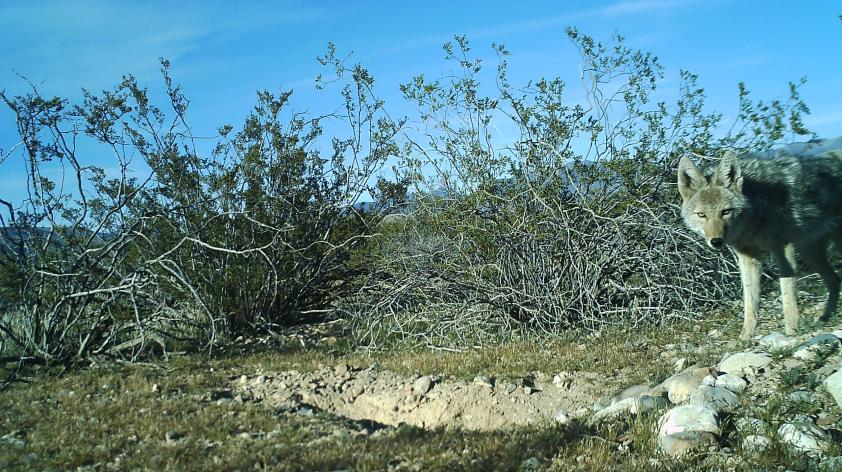
Behind the Scenes with Desert Tortoises
The San Diego Zoo’s desert tortoise research team in Las Vegas, Nevada sometimes wonders what goes on in the world of the desert tortoise when they aren’t looking. New technology has assisted at answering this question and the results have been intriguing! Tortoises are known to spend most of their time in burrows, which can make tracking the animals quite monotonous. An exciting part of research is being able to use technology to collect data and observe wildlife encounters without human interference. To observe tortoises on a more frequent basis, the research team uses trail cameras and other equipment to record data when the biologists aren’t able to be in the field.
The team has placed trail cameras at tortoise burrows to observe when the animals emerge in the mornings and record basking behavior. The trail cameras are mounted in front of the tortoise’s burrow entrance and set to record a photo when motion sensors on the front of the cameras are set off. The exciting part is going through the photos to see what type of critters and predators have been caught sniffing around the tortoise’s home. Tortoise burrows are widely used by other animals (rodents, rabbits, lizards, snakes, etc.), which makes the tortoise a key component to the Mojave Desert ecosystem.
In one instance, an American badger, which is a known predator of the tortoise, was observed sniffing and entering a tortoise burrow under a large rock. Luckily the tortoise was not home, but returned two minutes later to smell there was an intruder.
In other instances, coyotes and kit fox are observed checking out tortoise burrows to see who is home. These observations are made possible by technology and this opens up a wider range of questions for biologists to ask about what a tortoise encounters on a daily basis.













